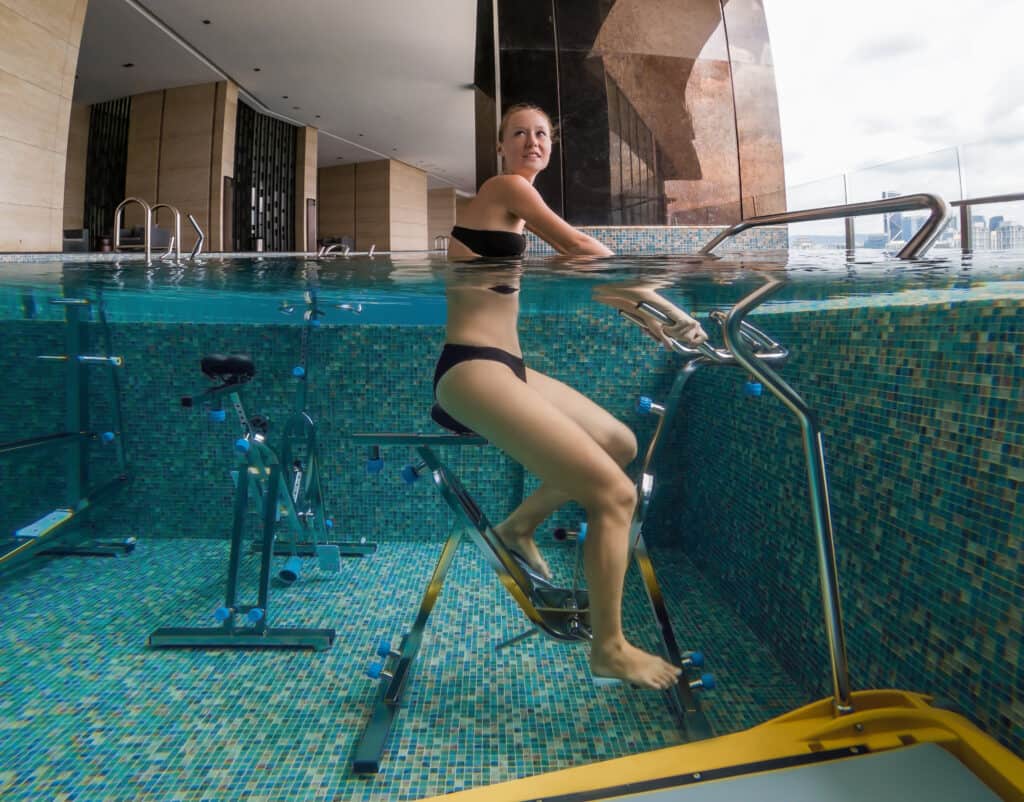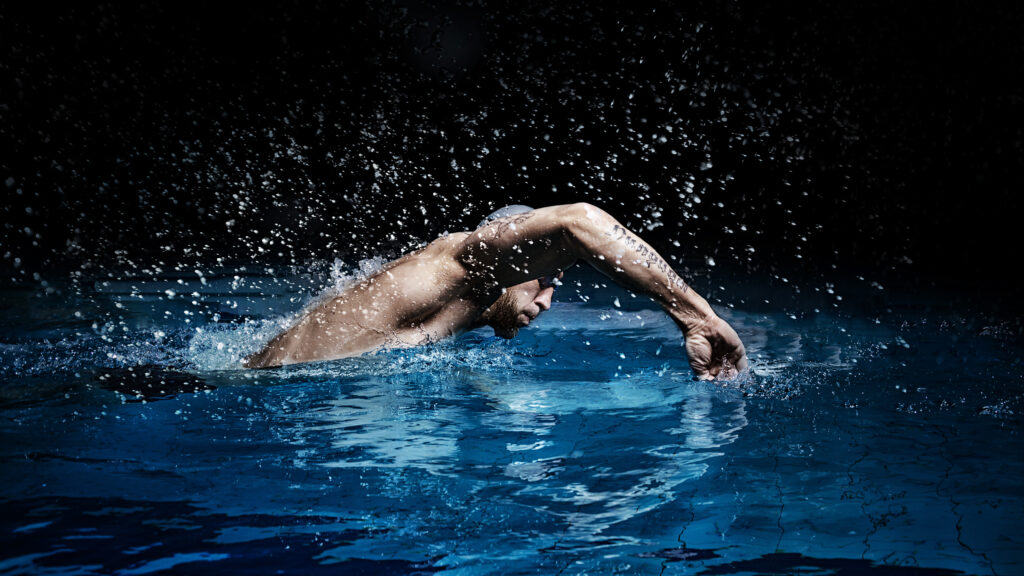There are many reasons why you continue to hear about athletes hitting the pool after a workout or a game. Using a pool post workout can be a crucial component of training, in turn, helping the body recover faster. There are many known benefits associated with active recovery sessions in the pool. This can come following a hard workout in the gym or after an athletic event. I remember back as an assistant strength and conditioning coach at the University of Connecticut, we typically put the football team in the pool on Monday as part of an active recovery plan, following a weekend game. A recovery workout in the pool will help reduce muscle soreness, flush out lactic acid, and prevent a drop-off in athletic performance.
Research on the Topic
Research from a 2010 study in the International Journal of Sports Medicine concluded “swimming-based recovery sessions enhanced following day exercise performance.” A second study, in the Journal of Sports Medicine and Physical Fitness, demonstrated an active pool recovery was the most efficient method at clearing blood lactate in the body, followed by massage, and finally passive recovery. Lastly, researchers from the University of South Carolina followed 40,547 adults between the ages 20 to 90 for more than three decades. They discovered that swimmers, regardless of their age, were about 50 percent less likely to die during the study than were couch potato’s, walkers, or runners.
Swim to Recover Faster
Here is an easy to follow active recovery routine to try. Perform each movement for a lap or two depending on the length of the pool you’re in. Focus on working your muscles through their full range of motion with each movement. The water is great to do this in because there is almost no gravity placed on the body and only about 10 percent of your bodyweight is used in the pool due to the buoyancy.
- Forward walking lunge with arm movement.
- Swim underwater.
- Backward walking lunge with arm movement.
- Swim underwater.
- Walk forwards.
- Jump and dive repeats.
- Walk backwards.
- Carioca.
- Squat and jump repeats.

Water Therapy Post Injury
Another great reason to get in the pool, in addition to helping the body recover faster from a workout, relates to injury recovery. The properties of water – buoyancy, hydrostatic pressure, density – are highly effective for rehabilitation. These properties make water therapy an ideal modality to regain function, muscle strength, balance, and range of motion.
The simple act of deep water running can help reduce your recovery time drastically. Position a “noodle” around your back or chest and under both arms to help you float. Begin, going side-to-side in the pool for laps or designated time. As your endurance improves, start using the full length of the pool. Always use a full range of motion, maintain a tall posture, keep core engaged, and use proper arm action during each lap. Progress to wearing a floating vest or waist unit in order to execute better arms action. It can be a great workout especially after a few weeks of inactivity, it feels great to move pain-free in the water.
Research has shown that swimming laps for an hour burns about 690 calories. Treading water expends about 11 calories a minute, same as running a 6-minute mile pace. This should give you some context regarding energy expenditure.
Stay Strong Together
Jefit app has been named one of the best strength training app for 2024 by PC Magazine, Forbes, Garage Gym Reviews and others. The app comes equipped with an advanced customizable workout planner, training log, the ability to track data and share workouts with friends. Take advantage of Jefit’s huge exercise database for your strength workouts. Visit our members-only Facebook group. Connect with like-minded people, share tips, and advice to help get closer to reaching your fitness goals.
- Whey vs. Casein: What’s the Best Protein for Building Muscle - April 18, 2025
- Four Popular Jefit Chest Exercises Backed by Science - April 16, 2025
- 4 Must-Have Exercises Backed by Science for a Full-Body Workout - April 14, 2025
